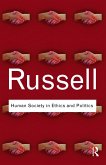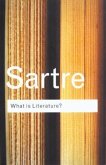Michel Foucault
Archaeology of Knowledge
Michel Foucault
Archaeology of Knowledge
- Broschiertes Buch
- Merkliste
- Auf die Merkliste
- Bewerten Bewerten
- Teilen
- Produkt teilen
- Produkterinnerung
- Produkterinnerung
Foucault's classic methodological statement.
Andere Kunden interessierten sich auch für
![Human Knowledge Human Knowledge]() Bertrand RussellHuman Knowledge19,99 €
Bertrand RussellHuman Knowledge19,99 €![Human Society in Ethics and Politics Human Society in Ethics and Politics]() Bertrand RussellHuman Society in Ethics and Politics30,99 €
Bertrand RussellHuman Society in Ethics and Politics30,99 €![The Philosophy of Leibniz The Philosophy of Leibniz]() Bertrand RussellThe Philosophy of Leibniz30,99 €
Bertrand RussellThe Philosophy of Leibniz30,99 €![What is Literature? What is Literature?]() Jean-Paul SartreWhat is Literature?26,99 €
Jean-Paul SartreWhat is Literature?26,99 €![Relativity Relativity]() Albert EinsteinRelativity25,99 €
Albert EinsteinRelativity25,99 €![Power Power]() Bertrand RussellPower28,99 €
Bertrand RussellPower28,99 €![A Short History of Ethics A Short History of Ethics]() Alasdair MacIntyreA Short History of Ethics25,99 €
Alasdair MacIntyreA Short History of Ethics25,99 €-
-
-
Produktdetails
- Produktdetails
- Routledge Classics
- Verlag: Taylor & Francis Ltd
- 2 ed
- Seitenzahl: 256
- Erscheinungstermin: 9. Mai 2002
- Englisch
- Abmessung: 198mm x 129mm x 14mm
- Gewicht: 278g
- ISBN-13: 9780415287531
- ISBN-10: 0415287537
- Artikelnr.: 21242409
- Herstellerkennzeichnung
- Libri GmbH
- Europaallee 1
- 36244 Bad Hersfeld
- gpsr@libri.de
- Routledge Classics
- Verlag: Taylor & Francis Ltd
- 2 ed
- Seitenzahl: 256
- Erscheinungstermin: 9. Mai 2002
- Englisch
- Abmessung: 198mm x 129mm x 14mm
- Gewicht: 278g
- ISBN-13: 9780415287531
- ISBN-10: 0415287537
- Artikelnr.: 21242409
- Herstellerkennzeichnung
- Libri GmbH
- Europaallee 1
- 36244 Bad Hersfeld
- gpsr@libri.de
Michel Foucault (1926-84). Celebrated French thinker and activist who challenged people's assumptions about care of the mentally ill, gay rights, prisons, the police and welfare.
Part I: Introduction. Part II: The Discursive Regularities 1. The Unities
of Discourse 2. Discursive Formations 3. The Formation of Objects 4. The
Formation of Enunciative Modalities 5. The Formation of Concepts 6. The
Formation of Strategies 7. Remarks and Cosequences Part III The Statement
and the Archive 1. Defining the Statement 2. The Enunciative Function 3.
The Description of Staements 4. Rarity, Exteriority, Accumilation 5. The
Historical a priori and the Archive Part IV Archeological Description 1.
Archeology and the History of Ideas 2. The Original and the Regular 3.
Contradictions 4. The Comparative Facts 5. Change and Transformations 6.
Science and Knowledge Part V: Conclusion Conclusion Index
of Discourse 2. Discursive Formations 3. The Formation of Objects 4. The
Formation of Enunciative Modalities 5. The Formation of Concepts 6. The
Formation of Strategies 7. Remarks and Cosequences Part III The Statement
and the Archive 1. Defining the Statement 2. The Enunciative Function 3.
The Description of Staements 4. Rarity, Exteriority, Accumilation 5. The
Historical a priori and the Archive Part IV Archeological Description 1.
Archeology and the History of Ideas 2. The Original and the Regular 3.
Contradictions 4. The Comparative Facts 5. Change and Transformations 6.
Science and Knowledge Part V: Conclusion Conclusion Index
Part I: Introduction. Part II: The Discursive Regularities 1. The Unities
of Discourse 2. Discursive Formations 3. The Formation of Objects 4. The
Formation of Enunciative Modalities 5. The Formation of Concepts 6. The
Formation of Strategies 7. Remarks and Cosequences Part III The Statement
and the Archive 1. Defining the Statement 2. The Enunciative Function 3.
The Description of Staements 4. Rarity, Exteriority, Accumilation 5. The
Historical a priori and the Archive Part IV Archeological Description 1.
Archeology and the History of Ideas 2. The Original and the Regular 3.
Contradictions 4. The Comparative Facts 5. Change and Transformations 6.
Science and Knowledge Part V: Conclusion Conclusion Index
of Discourse 2. Discursive Formations 3. The Formation of Objects 4. The
Formation of Enunciative Modalities 5. The Formation of Concepts 6. The
Formation of Strategies 7. Remarks and Cosequences Part III The Statement
and the Archive 1. Defining the Statement 2. The Enunciative Function 3.
The Description of Staements 4. Rarity, Exteriority, Accumilation 5. The
Historical a priori and the Archive Part IV Archeological Description 1.
Archeology and the History of Ideas 2. The Original and the Regular 3.
Contradictions 4. The Comparative Facts 5. Change and Transformations 6.
Science and Knowledge Part V: Conclusion Conclusion Index









